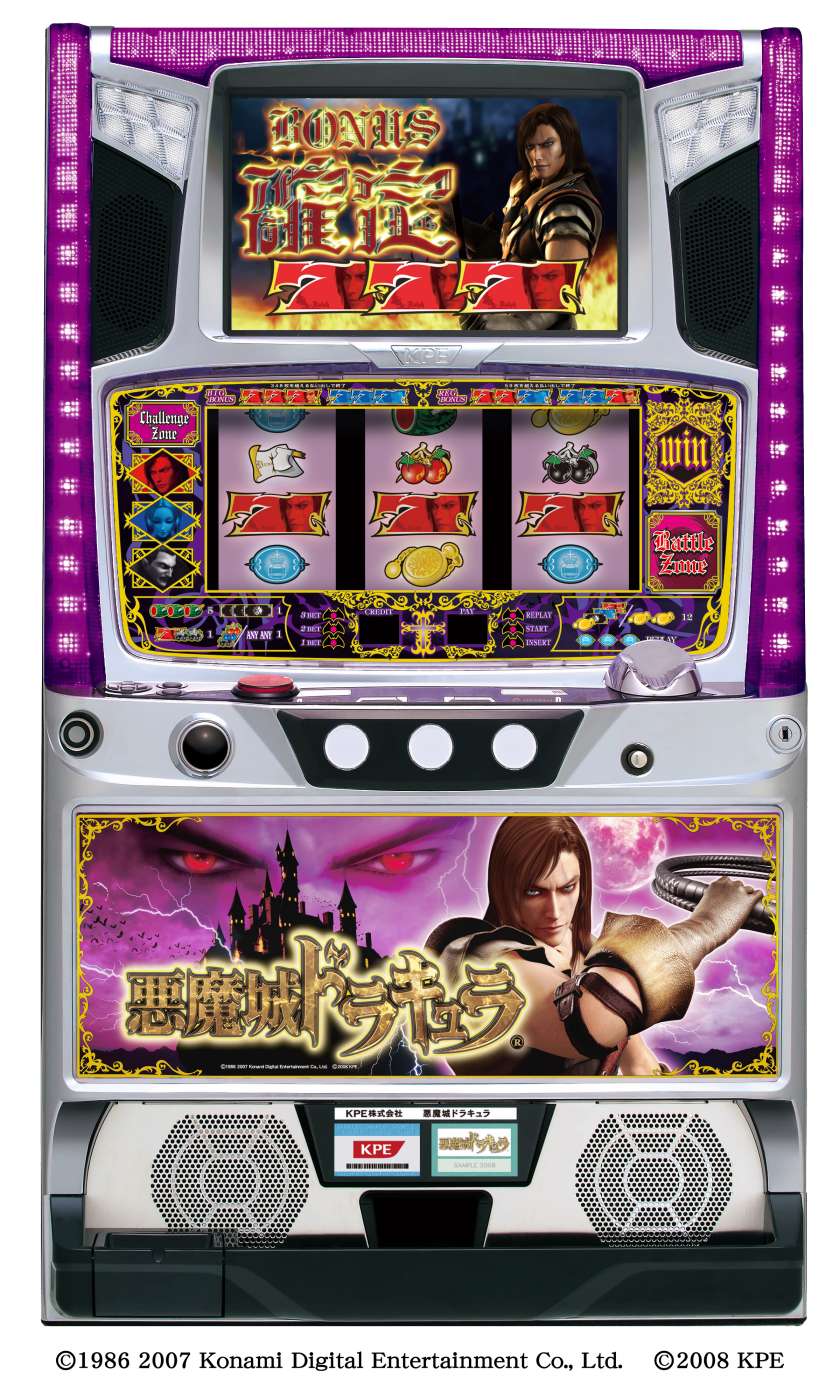5 Castlevania: Labyrinth of Love – Konami has multiple Castlevania themed slots, inspired by its video game franchise of the same name. This five-reel machine includes an expanded free spin mode along with a progressive jackpot tied to the Castlevania game board. Players who trigger the minigame get to pick from different sets of.
2009 – PlayStation Network (Castlevania: The Dracula X Chronicles). 2009 – Slot machine: Notes: First slot machine based on the series. Castlevania: The Arcade. Arcade and slot machines have been produced for the series. Castlevania: The Arcade (2009), a light gun shooter utilizing an LED remote, has only been released in Japan and Europe. The Japanese spin-off series, Pachislot Akumajō Dracula, is a pachislot line of Castlevania titles released between 2009.
Konami has produced over 30 games for its century-spanning, vampire-hunting central franchise. From the release of the original Castlevania in 1986 and through the '90s and 2000s, the series saw a new game often more than once a year, across a wide array of systems from consoles to handhelds.
All of that came to a screeching halt in 2014 with Castlevania: Lords of Shadow 2. In the second half of the 2010s, the only game-related releases associated with the Castlevania name were a couple of Pachinko slot machines, a mobile game called Castlevania: Grimoire of Souls, and the appearance of a Belmont or two in otherwise unrelated battle games. An animated Netflix series expanded the world's lore but didn't satisfy fans waiting for another Castlevania game.
So what went wrong? How did one of the most prolific, well-known, and long-standing video game series seemingly disappear? Let's dive into how the series grew, changed, and ultimately fell to discover what happened to Castlevania.
Castlevania Slot Machine 2009 Game

Castlevania Slot Machine 2009 Download
The Castlevania series was notoriously uneven
One of the things that fans sometimes forget about Castlevania was the many ups and downs that the franchise experienced. Many would hold the high point of the entire series up as the PlayStation title Symphony of the Night, a game that came to define the series and the 'Metroidvania' genre it inspired.
However, Konami failed to capitalize on this momentum. The next Castlevania release was Castlevania: Legends, a Game Boy title regarded as one of the worst in the franchise. That was followed by the Nintendo 64 games, Castlevania 64, which received okay reviews, and Castlevania:Legacy of Darkness, which did not. In 2005, Konami put out the well-regardedDawn of Sorrows but then followed it up with the disappointingCurse of Darkness.
This pattern continued up to the final Castlevania series, which was kicked off by the excellentLords of Shadow. However, critics found less to like about its follow-up, Lords of Shadow — Mirror of Fate, and even less value in the true sequel Lords of Shadow 2. Bad reviews and disappointing sales led to the cancellation of the revival for good.
Konami changed its focus in the 2010s
While a disappointing reboot certainly sapped some of Konami's enthusiasm for new Castlevania projects in the 2010s, it's not like Castlevania hadn't disappointed before. However, whereas Konami would have dusted off its favorite franchise to try again, by the time Lord of Shadows fell apart, Konami was on a different trajectory.
Castlevania Slot Machine
Before Lord of Shadows was even underway, the series' lead producer since the '90s, Koji Igarashi, had been shifted from Castlevania to different projects in Konami. Working conditions at Konami deteriorated, coming to a head when the company parted ways with Metal Gear Solid creator Hideo Kojima and removed his name from Metal Gear Solid 5.
In the background of that drama was a quiet success story for Konami, the release of 2010's Dragon Collection on mobile devices. The budget game started raking in big numbers, while ventures like Castlevania were not doing the same. Ultimately, Konami grew as a company and found new ways to make money without Castlevania.
For his part, Koji Igarashi left Konami in 2014 to start his own company. That company, Artplay, released Bloodstained: Ritual of the Night in 2019, considered the spiritual successor to Symphony of the Night.